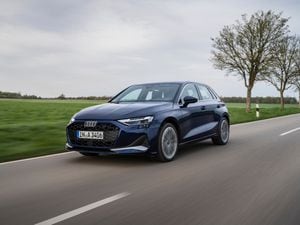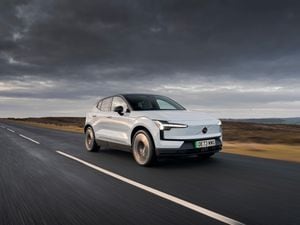First Drive: The new Toyota C-HR is a stylish hybrid crossover
Toyota is introducing a new, second-generation version of its popular C-HR. Ted Welford heads to Ibiza to try it out.
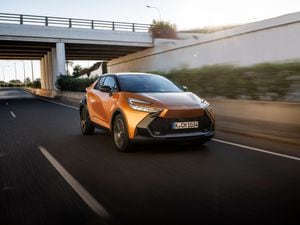
What is it?
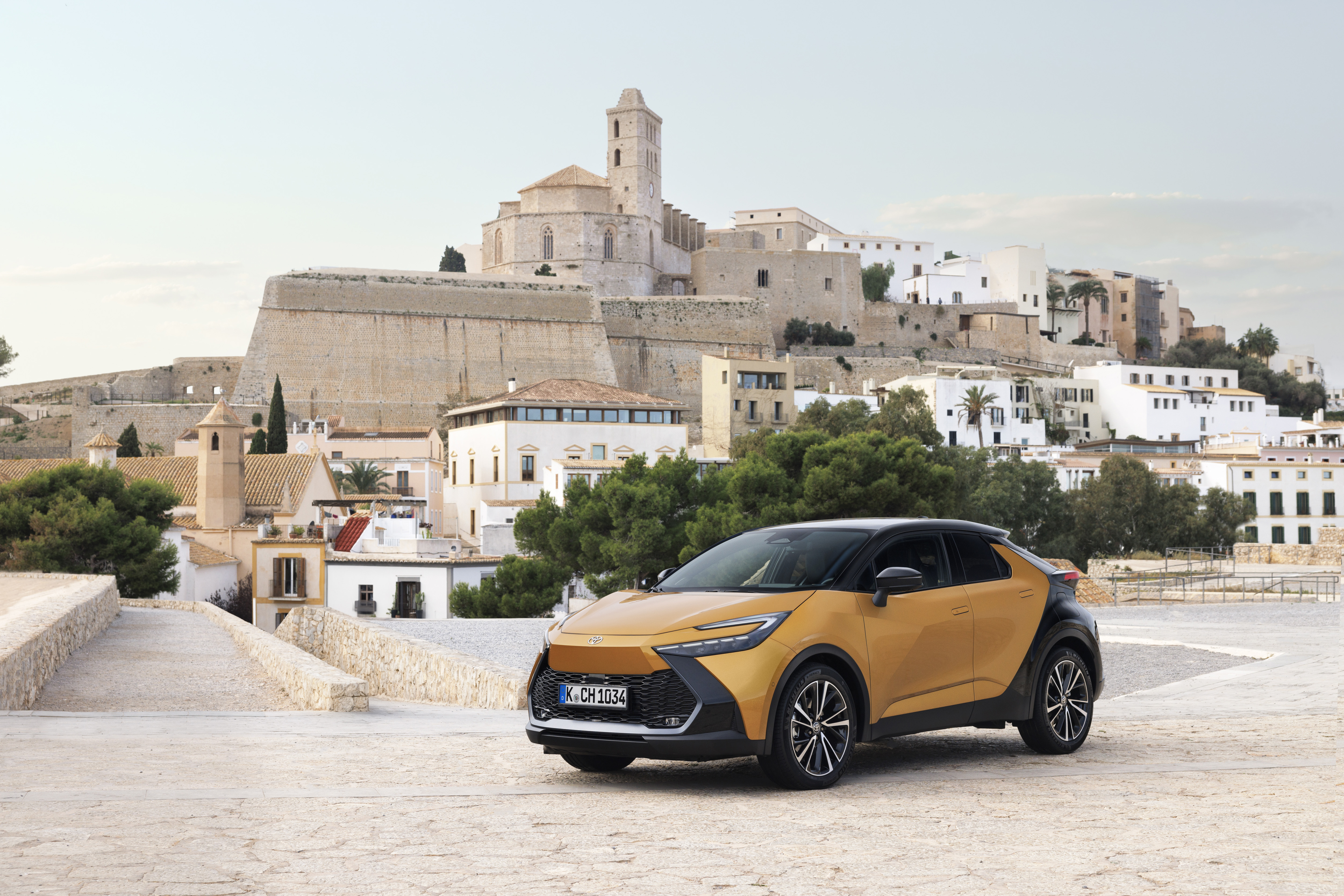
Toyota fell into a drab period in the late noughties and early 2010s, producing capable but oh-so-dull new cars like the Auris and Avensis. It was Toyota’s C-HR that helped this firm to get out of this bland rut in 2016, arriving as a stylish coupe-styled crossover that was unlike any other Toyota at the time.
Given its presence in one of the most hotly-contested segments, it was an instant hit, with more than 850,000 C-HRs delivered in Europe since its introduction and a large chunk of buyers choosing a Toyota for the first time. The firm is now introducing a new generation model, but is it set to be equally successful?
What’s new?
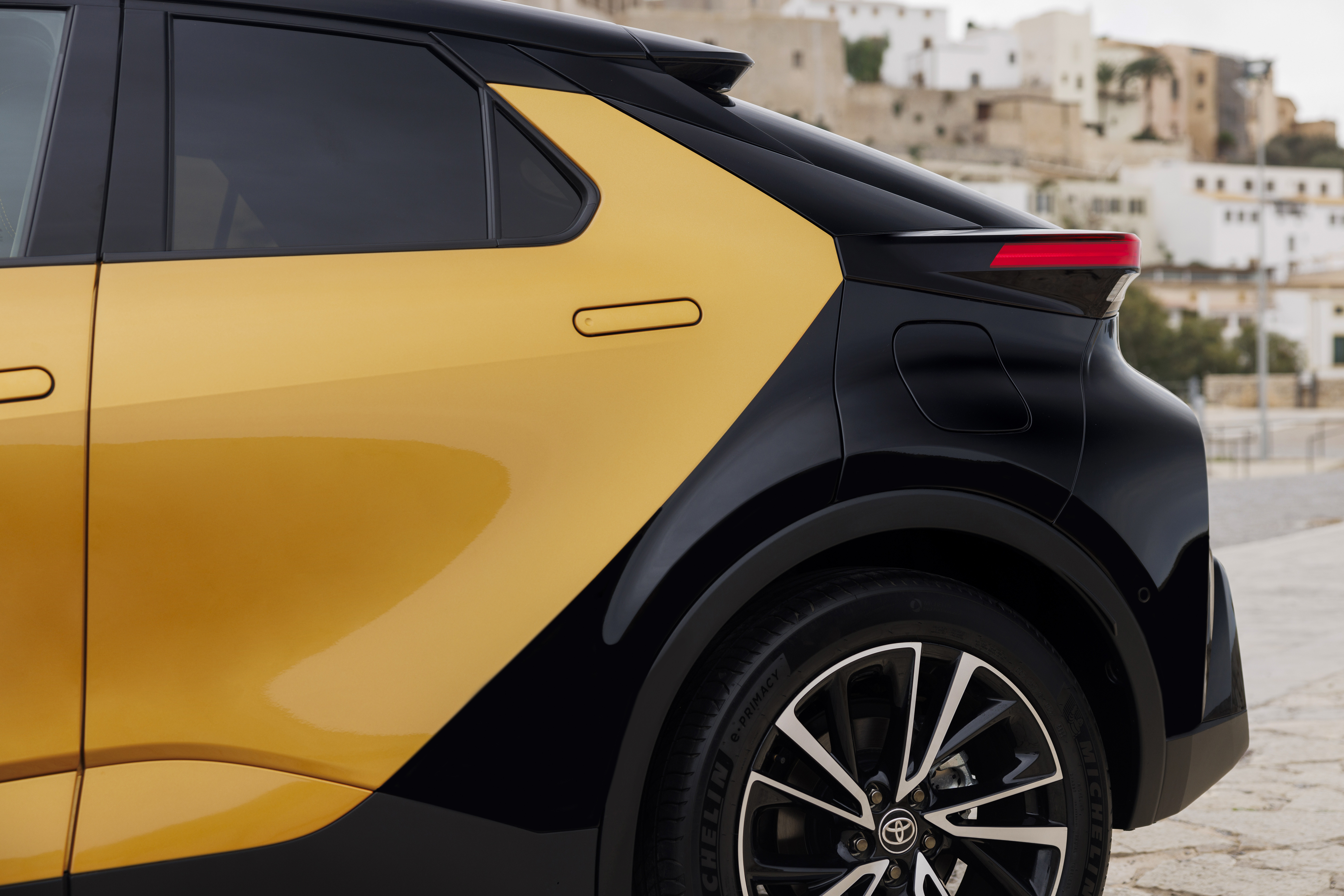
Toyota has stuck to its tried-and-tested formula with the C-HR. That means you’ve got an even bolder design, with a striking new bi-tone paint finish available on top-spec models that sees the rear area of the car painted in a contrasting black.
As before, the C-HR is only available as a hybrid, though Toyota is introducing a new plug-in hybrid version, which brings an electric-only range of around 41 miles. The on-board tech has taken a big leap too, with Toyota looking to take things a level upmarket with this new car, though this is reflected in the price – more on that later, however.
What’s under the bonnet?
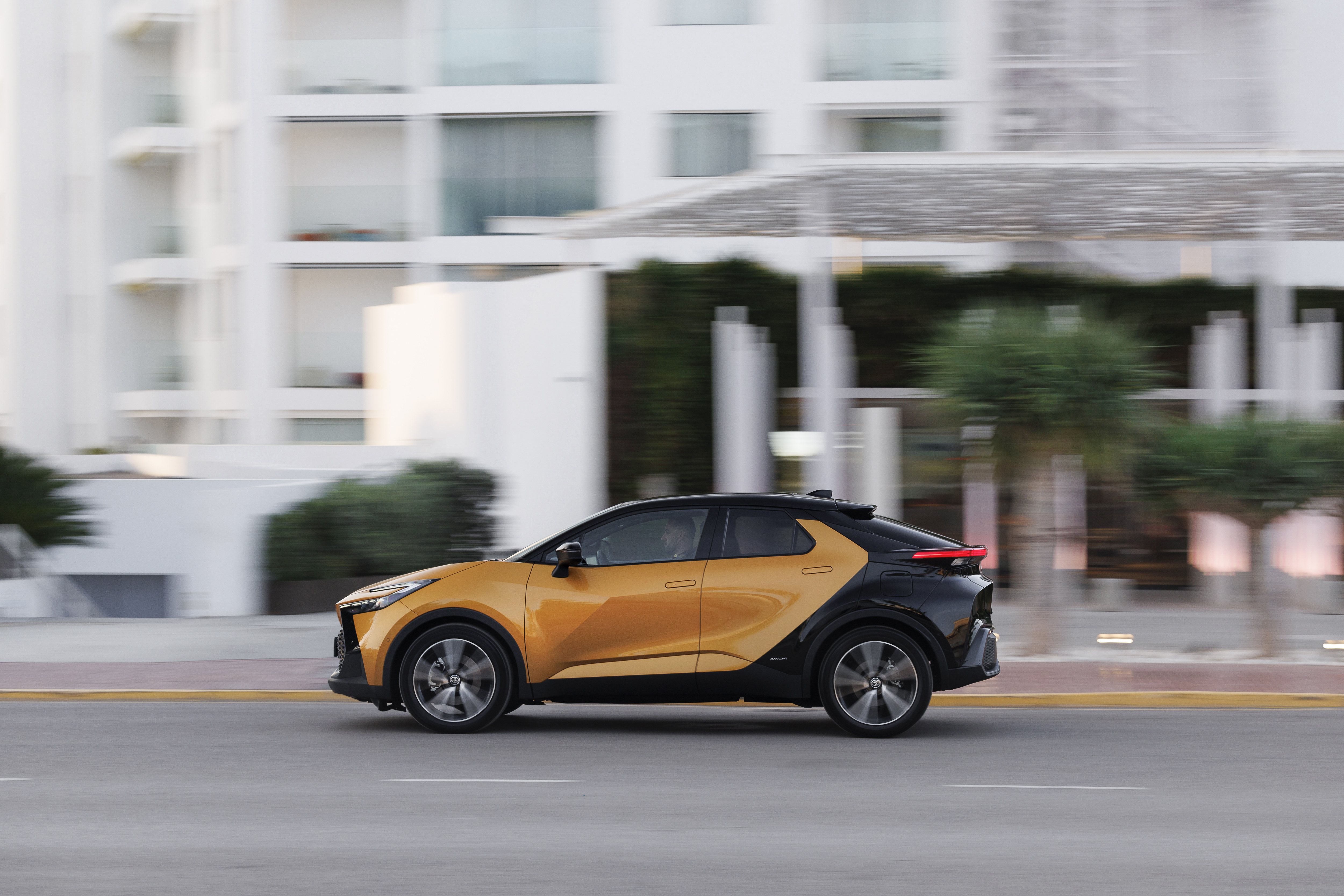
As we’ve mentioned, Toyota will introduce a 227bhp plug-in hybrid model in the first half of 2024, but until then it’s only the ‘self-charging’ hybrid models available. Both use Toyota’s latest generation of hybrid technology and are more or less shared with that of the latest Corolla.
At the top of the range sits a 193bhp 2.0-litre petrol-electric hybrid, but the model expected to account for 95 per cent of sales is the regular 1.8-litre petrol-electic hybrid, which delivers 138bhp.
A CVT automatic gearbox sends drive to the front wheels (UK buyers won’t have access to an all-wheel-drive model that other markets will get), with 0-60mph arriving in 10 seconds. In terms of efficiency, Toyota claims 60.1mpg and low 105g/km CO2 emissions. The fuel economy is superb for a car of this type, as we matched the claimed figure, with more than 50 per cent of our drive being completed in ‘EV’ mode.
What’s it like to drive?
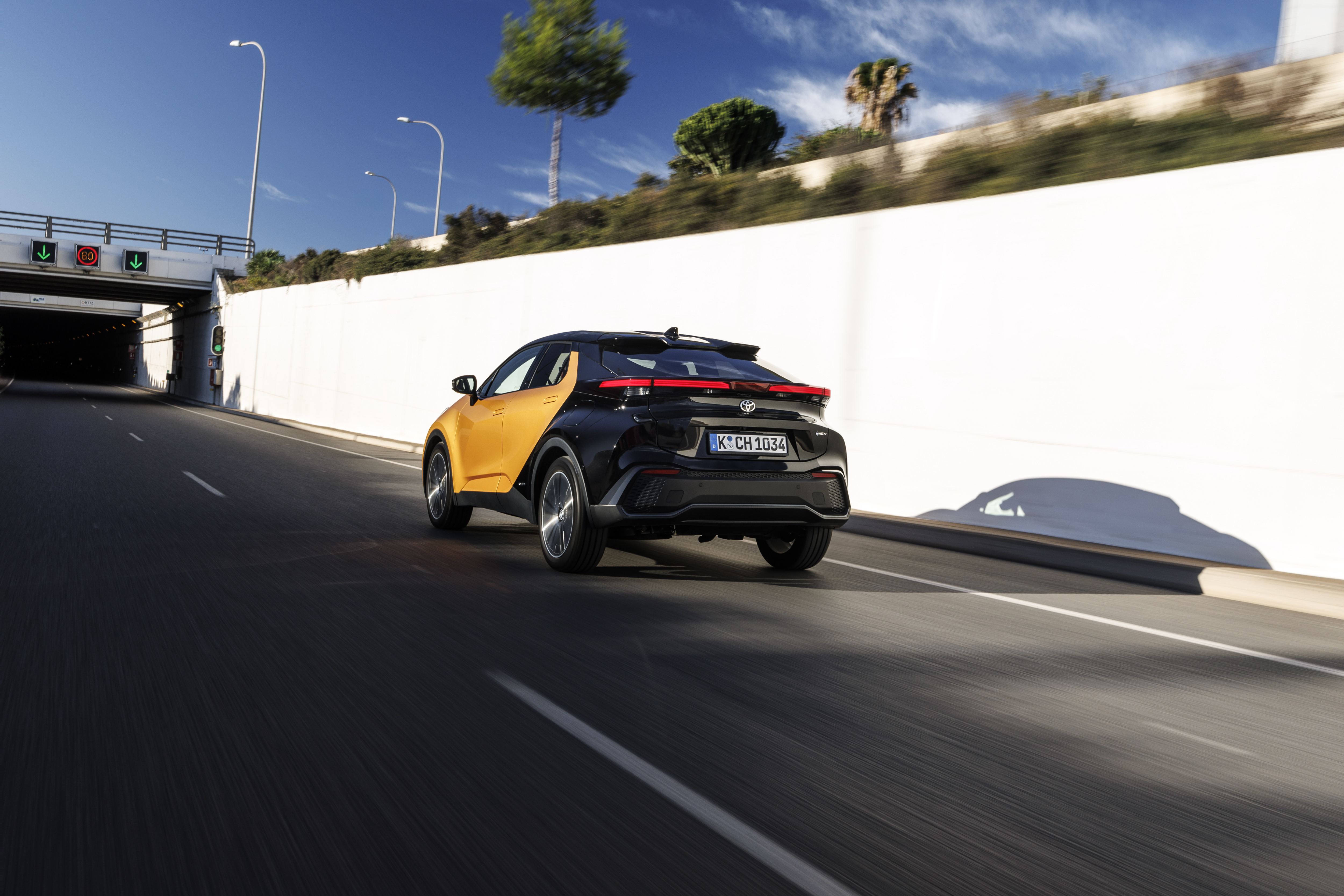
Though the welcome additional power of the 2.0-litre shaves two seconds off the C-HR’s 0-60mph time, we suspect that for most the 1.8-litre setup will be up to the task. It’s more than capable of keeping up with traffic, while the initial kick of the electric motor helps to make the C-HR feel brisker than the figures suggest. The only issue is that the engine is loud, with even fairly mild acceleration equating to an unpleasant roar. The 2.0-litre is quieter, but by no means perfect.
Other than this, the C-HR is excellent, however. Even on our test car’s large 19-inch alloy wheels, the ride quality was fantastic, not being unsettled at all by speedbumps. We suspect it will work well on the UK’s roads. It handles nicely, too, feeling agile for a crossover, and it’s pleasing that the driving behaviour backs up the sporty looks.
How does it look?
Design has always been the core focus of the C-HR, and this latest model is no different. To our eyes at least, it’s one of the most stylish crossovers in its segment, if not the most. Toyota calls it a ‘concept car for the road’, and given its close resemblance with the C-HR Prologue show car, we agree. Details such as the flush, pop-out door handles, give it a more premium appeal, although these retract into the bodywork with a really rather unpleasant bang.
The striking ‘hammerhead’ design at the front immediately gets the C-HR noticed, but it’s around the rear where the large LED light bar with illuminated badging is really the focal point. The extended ‘Bi-tone’ paint finish – usually only used for the top half of the car by other brands – also extends to the C-pillars and boot in a contrasting black and looks the part. It’s worth noting this is only included as standard on the pricier top-spec trims.
What’s it like inside?

The interior of the C-HR is also a noticeable improvement. There’s plenty of technology available, including a customisable digital instrument cluster, optional digital rear-view mirror and large 12.3-inch widescreen touchscreen. Though the latter is quick to use, its functionality feels a bit basic.
But the quality of the C-HR is excellent and feels noticeably more premium than the previous car. For buyers after a more traditional feel, physical climate control buttons are welcome, and the general feel of the interior is one that’s easy to use and get your head around.
Though the C-HR isn’t the biggest car in its segment, it should offer a decent amount of room for most. Despite the sloping roofline, headroom in the back is good, even with a panoramic roof fitted, courtesy of special glass that doesn’t require a sunblind to be fitted. Legroom may be a bit tight for taller adults, however, and though the 388-litre boot looks a decent size at first, it’s not the most practical of shapes. The rear seats don’t fold flat to the floor, either.
What’s the spec like?

Regardless of which C-HR you choose, the level of equipment is generous. Standard features include keyless entry, a reversing camera and an eight-inch touchscreen with wireless Apple CarPlay and Android Auto.
The pick of the line-up would be the Design version, though, which gets a larger 12.3-inch touchscreen and digital dial display of the same size, along with an electric boot and heated front seats.
The C-HR model starts from £31,290, or £34,685 in our chosen Design trim, which Toyota expects to account for more than half of sales. Above this, the C-HR starts getting expensive, with our test car, in Excel trim, coming in at £38,150. If you want the 2.0-litre hybrid setup, you’re limited to the top-spec GR Sport and Premiere launch edition, which both cost north of £40,000.
Verdict
Just like its predecessor, for many buyers, the C-HR’s styling will do all the selling, but this is a car that has the substance to back up its cool looks. With a smart interior and excellent driving manners, it’s a very easy car to recommend in what continues to be one of the most competitive segments.
Even the slightly noisy powertrain can’t put us off the C-HR, as despite the sometimes annoyingly vocal engine, this Toyota makes up for it with its impressive efficiency. Just avoid the top-spec models, and as long as spaciousness isn’t a top priority, the C-HR continues to be a fine choice and really shines in Toyota’s line-up.




